COSTA BLANCA

Costa Blancat, mis sõna otses mõttes tähendab “Valget Rannikut” loetakse üle 200 kilomeetrise rannajoonega piirkonda Alicante provintsis, Valencia maakonnas. Regiooni peetakse just soolajärvede rohkuse tõttu üheks tervislikumaks piirkonnaks Euroopas. Soolajärvede lähedane mikrokliima aitab väga hästi igasuguste liigeseprobleemide, seljavalude, nahahaiguste ja näiteks ülemiste hingamisteede haiguste vastu. Eneselegi üllatusena võib näiteks astma või seljaprobleemid Costa Blancal võidetuks lugeda.
Costa Blanca piirkonna rannad on Hispaania ühed parimad ja paljud neist omandandunud ka “Blue flag ”https://www.blueflag.global/ staatuse. Leidub nii lumivalge liivaga palmidega tikitud randu, kui kõrvalisi kaljurandasid erivärviliste kalade ja kristallselge veega. Rannad on hästi hooldatud ja kergesti ligipääsetavad.
Piirkonda iseloomustab ka turgude rohkus. Igas väikeses linnas on traditsiooniliselt turupäev, kust leiab rohkelt värskeid mereande, puu- ja juurvilju (kõige magusamad apelsinid), kohalikku käsitööd, riideid jpm.
Kuigi Costa Blanca ei ole kõige suurema pindalaga piirkond, on maastik äärmiselt vaheldusrikas – põhja-poolset rannikut iseloomustavad kaljud, mäed ja rohelus, lõunarannik on veidi soojem, kuivem ning tasasem.
Costa Blanca kliima on üleüldiselt aasta läbi stabiilne. Talved on veidi jahedamad, kui suved, kuid ka talvine temperatuur on võrreldav Eesti suvega.
Dénia ja Javea
Dénia on väike hubane linnake Costa Blanca põhjaosas. Lisaks ilusatele randadele pakub Denia ka ajaloolist ja kultuurilist väärtust. Denia on segu ibeeria, rooma, islamistlikust ja kristlikust kultuurist, mis kõik on linnale oma märgi jätnud. Denia on ehitatud ümber kesklinnas oleva mägilossi, lossist avanevad imelised vaated linna, sadamale ja merele ning Montgo mäele, mille küljele Denia rajatud on. Loss on ehitatud 11. sajandil ja on koduks ka kohalikule linnamuuseumile.
Denia rannajoon on 15 kilomeetrit pikk, kuhu sisse mahub nii liivarandu kui kaljudest ümbritsetud kristallselge veega väikesi eraldatud lahtesid.Veehuvilistele leidub rohkelt võimalusi meelelahutuseks – saab nii sukelduda kui snorgeldada, paate laenutada, katamaraaniga kruiisile minna, delfiine vaadelda, SUPitada, surfata jpm.
Olles maismaal baleaari saartele kõige lähem linn, on Denial nendega ka hea praamiühendus. Miks mitte võtta üks päev ja veeta see Ibizat avastades?
Deniasse tulles ei saa loomulikult mööda vaadata 753 meetri kõrgusest Montgo mäest, mis eraldab Deniat ja Javeat. Montgo looduskaitseala on koduks paljudele erilistele taime- ja linnuliikidele. Montgo mägi on kergesti ligipääsetav ja pakub elamust nii matka-kui rattaspordihuvilistele.
Javea asub Montgo mäe lõunapoolsel küljel. Tegemist on väikese maalilise rannikuäärse linnakesega, mis oli asustatud juba 30 000 aastat tagasi.Javeat iseloomustab ajalooline vanalinn, väikesed selge veega rannad ja veesport ja aastaläbi toimuvad festivalid.
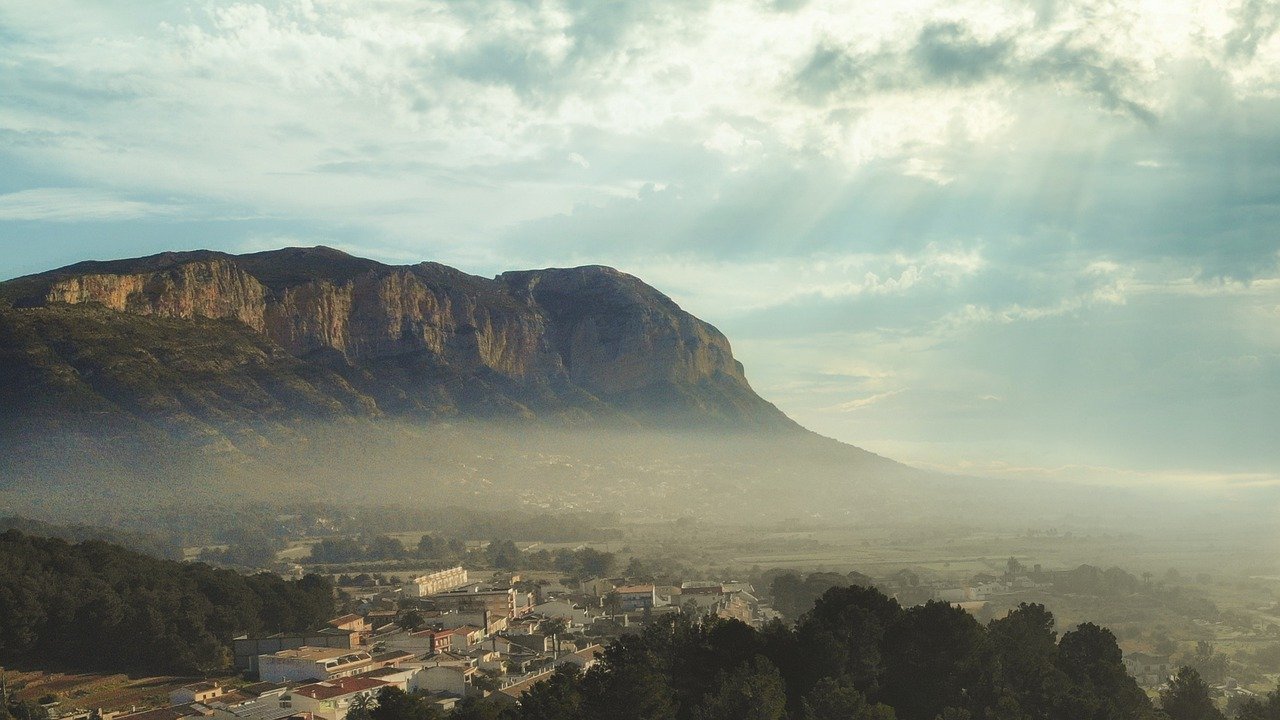
Calpe
Calpe on tuntud oma massiivse 332 meetrise merre ulatuva kitsa kaljurahnu poolest. Kaljut näeb juba kaugelt kiirteelt ja on selgesti eristuv oma ebaloomuliku kuju tõttu. Kaljurahn pakub elamust nii alt üles kui ülevalt alla vaadates. Rahnu ümber asetseb Penyal d’Ifac looduspark, milles leidub nii mõndasigi haruldasi taime- ja linnuliike. Kui rahn välja jätta, siis Calpes on tegemist ja vaatamist küllaga, näiteks kuuluvad vaatamisväärsuste hulka ka “Los Baños de la Reina” ehk kuninganna basseinid, soolaväljad ja otseloomulikult kaunis vanalinn ja promenaad.
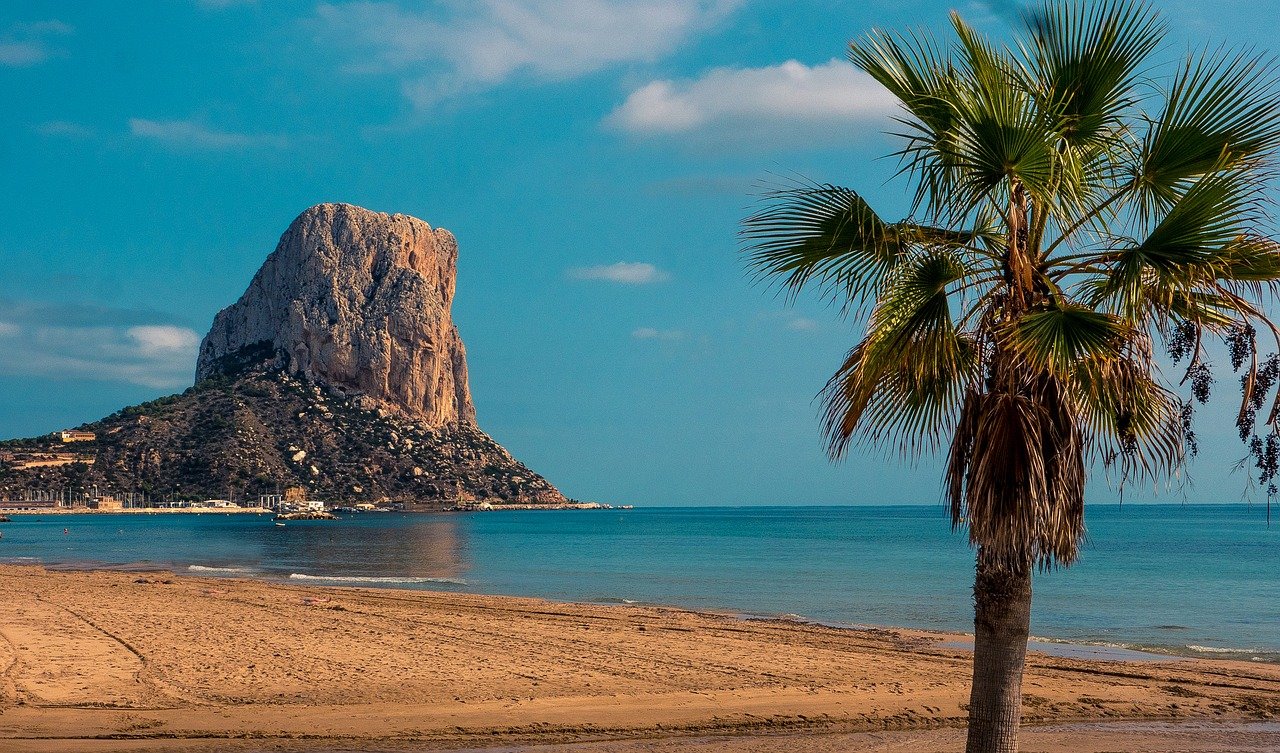
Benidorm
Benidorm, mida võiks kutsuda ka kohalikuks Manhattaniks, on populaarne turismisihtkoht Altea ja Alicante vahel. Benidorm hakkas kasvama ja populaarsust koguma alles 1950ndatel aastatel, kui põhiliselt turistid Hispaania sisemaalt ja eriti Madridist Benidormis puhkamas hakkasid käima ja suvekodusid rajama. Tänapäeval on Benidorm hästi kaugelt silma paistev oma rohkete pilvelõhkujatega, mida näiteks lähimast suurlinnast Alicantest ei leia.
Benidorm on äärmiselt populaarne brittide, iirlaste, belglaste ja sakslaste seas eriti tänu odavatele paketireisidele nendest riikidest. Linnast ei puudu suur lõbustuspark, veepark ja teemapark. Samuti on Benidorm tuntud oma lakkamatu ööelu poolest, mis ei vaibu isegi jahedamatel talvekuudel.
Benidormist sisemaale sõites jääb tee peale palju ilusaid ja looduskauneid kohti – nt. Guadalesti loss ja küla, Algari kosed, dinosauruste park jpm. Kes ei soovi elada pilvelõhkujas või suure linna melus, aga ei taha sellest ka väga kaugele jäälda, siis on Benidormi külje all mäe nõlval asuv Polop suurepärane valik.
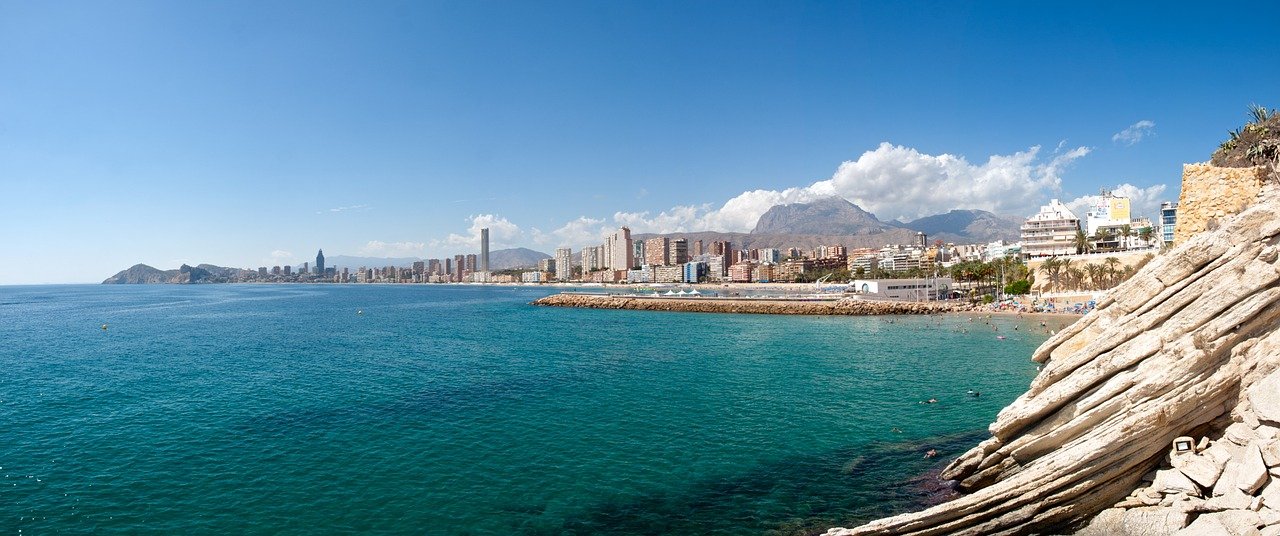
Alicante
Alicante on provintsi ja Costa Blanca suurimaks linnaks ja keskuseks ning Valencia maakonna teine suurim linn. Alicante puhul ei ole tegemist ainult kuurortlinnaga vaid ka olulise majanduskeskusega. Alicantes asub mitu ülikooli, suur sadam, Euroopa Liidu intellektuaalse omandi osakond, mitmed tehased, varasemalt asus seal ka näiteks Euroopa suurim filmistuudio, mis aga praeguseks on kahjuks suletud.
Alicantel on rikas ajalugu ja linna keskuses võiks lugeda juba kilomeetrite kauguselt silma paistvat 9ndast sajandist pärit Santa Barbara kindlust. Linnas asub mitmeid muidki ajaloolisi hooneid aga ka küllalt modernseid ehitusi.
'
Santa Pola
Santa pola on küllatki laiali ulatuv piirkond Alicante ja Torrevieja vahel ranniku ääres. Santa Pola on strateegiliselt väga heas kohas. Lennujaam on kõigest keskmiselt 10-15 minutilise sõidu kaugusel, samuti on Alicante kesklinn ainult vähem kui 20 kilomeetri kaugusel. Santa Pola rannaäärt iseloomustavad nii liivaluited, kui männimets, kui kaljud. Santa Pola ümbrus paistab kaardi pealt vaadates kui lapitekk. Sellise mulje jätavad ohtrad läheduses asuvad soolajärved ja kaevandused. Soolajärved on jällegi meelis pesitsuspaik eksootilistele Flamingodele. Santa Polast on mugav praami või katamaraaniga sõita lähedal asuvale väikesele Tabarca saarele, mis on tuntud värviliste kalade, kristallselge vee ja snorgeldamisvõimaluste poolest.
Torrevieja
Torrevieja on üheks tuntumaks kuurortlinnaks Valgel Rannikul. Tegemist on linnaga, kus on aastaläbi midagi teha ja on äärmiselt populaarseks sihtkohaks kõiksuguste rahvuste seas. Aastaläbi elab Torreviejas umbes 100 000 inimest, suviti populatsioon neljakordistub. Ainult pooled neist on Hispaanlased, nii püsielanike kui puhkajate seas leidub hulgaliselt britte, hollandlasi, sakslasi, norrakaid, rootslasi, venelasi, prantslasi jpm. Torrevieja on geograafiliselt äärmiselt hea asukohaga ja peetakse Hispaania üheks tervislikumaks piirkonnaks, sest on üheltpoolt ümbritsetud Vahemerega ja teiselt poolt kahe soolajärvega, mis loovad linnakeses erilise mikrokliima. See mikrokliima sobib hästi inimestele, kes kannatavad näiteks astma või selja- ja liigesvalude käes. Ka Torrevieja haigla on tipptasemel ja tunnustatud üle maailma.
Linnakeses leidub tegevust nii noorematele kui vanematele – linnas on muuseume, lõbustuspark, veepark, kinod, kaubanduskeskused, rannad, koolid jpm.
Kinnisvarahinnad Torreviejas on pigem soodsamad kui veidi põhjapoolsemates kuurortlinnades. Samas on hinnatase linna erinevates piirkondades väga erinev, korter on võimalik osta nii 30 000 euroga, kui 130 000 euroga.
Torrevieja on kindel valik nii inimesele, kes soovib tulla Hispaaniasse elama, kui lihtsalt puhkama.
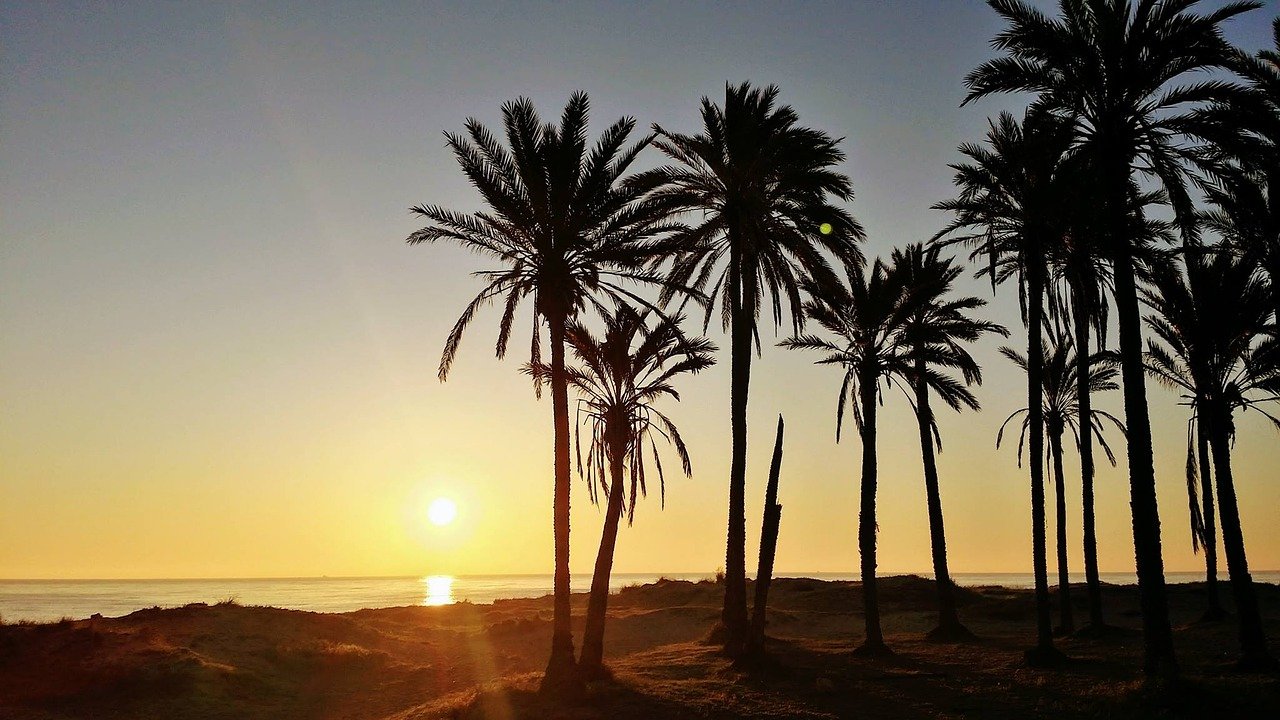
Orihuela Costa
Orihuela Costa, mis tähendab tõlkes Orihuela rannikut on tegelikult suurema provintsi Orihuela nn äärelinn. Orihuela Costa ühendab endast La Zenia, Cabo Roigi, Dehese de Campoamori, San Miguel de Salinast, Villamartinit, Pilar de Campoverdet, Los Dolsest, La Fuentet ja Los Montesinost, nii et tegemist on küllaltki suure piirkonnaga. Ala on väga populaarne just inglaste seas nii et näiteks teatud tänavad meenutavad mini-Inglismaad.
Orihuela Costa rannajoon on väga omanäoline, kus vahelduvad selge ja valge liivaga rannad, väikesed kaljudega ümbritsetud liivased sopid ning kõrged kaljud, kust viivad trepid alla kiviste randadeni. Eriliselt kaunis on näiteks Punta Prima, mis paistab silma oma palmirohkete alleede ja tipptasemel uusarenduskompleksidega, kust ei puudu ka näiteks spad- ja jõusaalid.
Golfimängijatele on Orihuela Costa kui paradiis – mitmed Costa Blanca populaarseimad golfiväljakud asuvad just seal. Kinnisvarahinnad on Orihuela Costal väga mõistlikud ja kes tunneb kindlamalt end kaasmaalaste seltskonnas, siis Orihuela Costal elab mitmeid Eesti peresid.
COSTA CALIDA
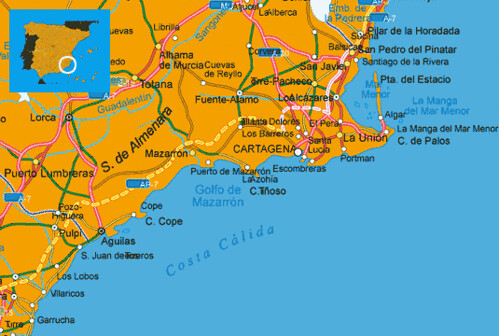
Costa Calidaks ehk kuumaks rannikuks nimetatakse umbes 250 kilomeetrist rannajoont Murcia maakonnas. Nime on maakond saanud oma suhteliselt kõrge aasta keskmise temperatuuri ja väheste sademete järgi. Kuigi ka Costa Blancal sajab vähe, on Costa Calidas eriti palju kõrbeseid ja kuivi piirkondi.
Costa Calida tähtsamateks linnadeks on Cartagena ja Mazarron. Costa Calida on turistide seas veidi vähem populaarsem kui Costa Blanca, kuid oma omanäolise maastiku, lahesoppide, rohealade, kõrbete ja mäestikuga ei ole see väiksemat populaarsust iseenesest kuidagi ära teeninud.
Costa Calida puhul on tegemist ka kinnisvaraostu suhtes veidi odavama piirkonnaga – nii võib sealt väga hea hinna- ja kvaliteedisuhtega leida nii rannaäärseid uusarendusi kui second-hand kinnisvara.
Costa Calida suurimaks linnaks on Cartagena, mis oma vanalinnaga teeb silmad ette nii mõnelegi teisele nn vanalinnale Hispaanias. Cartagena asutati juba peaaegu 2000 aastat tagasi ning selle hiilgeaeg jäi Rooma impeeriumisse, mil seda nimetati ka näiteks uueks Kartaagoks. Cartagenas on Vahemere lääneosa üks tähtsamaid kaitsesadamaid ning ka praegusel ajal on see Hispaania sõjalaevastiku kodusadamaks. Cartagenas asub palju ajaloolisi vaatamisväärsusi, nende hulgas näiteks vana Rooma teater ning üle 700 aastane Santa Maria La Vieja katedraal.
Costa Calida populaarsemad kuurordid paiknevad Mar Menori ümber. Mar Menor on kõrgete hoonetega kuurort ,mis asub pikal liivaribal, lahutab Vahemerd ja Mar Menori ehk Väiksemat merd .Tegelikult on eraldatud Mar Menor suur laguun ,mis võib suvel olla Vahemerest kuni + 5C soojem .Mineraalide kõrge konsentratsioon on ravi otsivaid turiste meelitanud 20.sajandi algusest peale. Nad peatusid Santiago de la Ribera ja Los Alcazarese vanemates kuurortites ,kus on sellest ajast säilinud kenad puust sadamasillad. Cabo de Palose ja CaboTinoso vahel eraldavad väheseid väikesi randu kaljurüngad .Ranniku lõunaosa kuurordid on suhtelised väikesed. Puero de Mazzaronis on palju häid randu ja lähedal, Bolnuevo juures on tuul uuristanud pehmed kaljud veidrateks kujudeks .Aguilase kasvav kuurort märgib ranniku lõunapiiri Andaluusiaga .Paljudel Costa Calida lõunapoolsetel randadel käivad kevadeti kilpkonnad munema, mil osad rannad võivad olla väikseks perioodiks suletud. Täpsema randade info leiad siit https://www.beach-inspector.com/en/db/costa-calida
Lühikese videoklipi Costa Calidast leiad SIIT